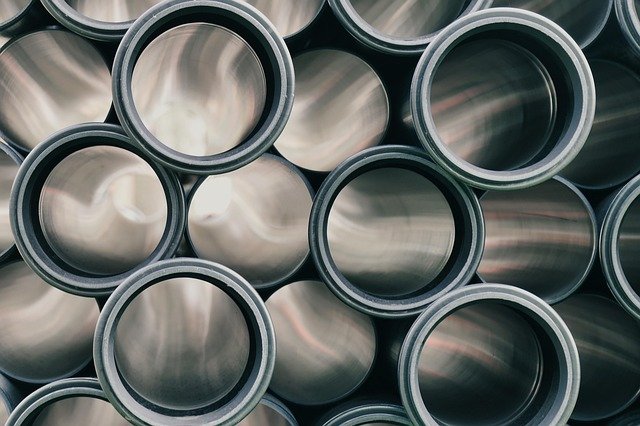Using thermal gradient mapping to rank excavation priorities
Thermal gradient mapping helps prioritize excavation by revealing temperature anomalies associated with leaks, utility lines, or subsurface changes. By combining thermal imaging with complementary sensors and data sources, teams can triage sites for safe, efficient excavation. This overview explains how thermal gradients are measured, validated, and integrated into excavation planning to reduce unnecessary digging and focus resources where subsurface risk is greatest.

Thermal gradient mapping provides a practical way to rank excavation priorities by identifying where heat variations suggest subsurface anomalies. When applied to utility corridors and pipelines, thermal data highlights potential leak paths, voids, or buried assets that are thermally distinct from surrounding soil. Integrating these maps with historic records and additional sensor inputs supports data-driven decisions that reduce risk and minimize unnecessary disruption while improving diagnostics and site safety.
Sensors and calibration
Thermal mapping begins with reliable sensors and careful calibration. Infrared cameras, handheld thermal imagers, and fixed thermal arrays require radiometric calibration to convert sensor readings into accurate surface temperatures. Calibration accounts for emissivity, atmospheric conditions, and sensor drift. Ground-truth sensors, such as temperature probes or calibrated reference panels, are often used in tandem to validate thermal gradients. Regular calibration ensures that detected anomalies reflect true subsurface phenomena rather than instrument error, which is critical when rankings influence excavation decisions.
Thermal and infrared mapping
Infrared surveys translate thermal gradients into spatial maps that reveal hot or cold linear features, plumes, or discrete spots. These maps are produced from aerial platforms like drones or from ground-based scanning, depending on resolution needs and accessibility. Thermal mapping is sensitive to diurnal cycles and soil moisture; surveys are best planned to maximize thermal contrast, such as during early morning hours or stable weather windows. Interpreting thermal signatures in context—overlaying maps with known infrastructure and soil data—improves localization of potential leaks and other subsurface concerns.
Acoustics and pressure diagnostics
Thermal mapping is more powerful when combined with acoustics and pressure diagnostics. Acoustic sensors and correlators detect noises consistent with fluid escape, while pressure monitoring reveals abnormal drops or fluctuations in pipelines. Cross-referencing acoustic detections with thermal hotspots increases confidence that a thermal anomaly corresponds to an active leak. Diagnostics should be synchronized so temporal patterns from acoustic and pressure data align with thermal observations, enabling more accurate ranking of excavation urgency.
Pipeline and subsurface localization
Ranking excavation priorities requires precise localization of suspected anomalies relative to pipelines and other buried assets. Geospatial referencing ties thermal maps to pipeline centerlines and utility surveys, while subsurface models estimate depth and extent of anomalies. Techniques such as triangulation from multiple imaging passes, ground-penetrating radar overlays, and fiberoptics sensing can refine localization. Accurate spatial context reduces the area that crews need to expose and helps determine where minimally invasive verification or full excavation is warranted.
Fiberoptics, IoT monitoring, and diagnostics
Distributed fiberoptic sensing (DFOS) and IoT-connected monitors extend continuous detection capabilities across pipelines and corridors. Fiberoptics can detect temperature changes, strain, or acoustic disturbances along a linear network, providing high-resolution localization over long distances. IoT pressure and flow sensors feed time-series data into diagnostic systems that flag deviations from baselines. When an IoT alert coincides with a thermal gradient, the combined evidence strengthens the priority ranking and supports targeted response strategies.
Surveying and data interpretation
Effective excavation prioritization relies on robust surveying and multidisciplinary data interpretation. Land surveying and georeferencing ensure thermal maps align with cadastral and utility records. Analysts should incorporate soil type, moisture, seasonal effects, and nearby infrastructure into interpretation to avoid false positives. Machine learning and statistical approaches can help score anomalies based on likelihood of being leaks or hazards, producing ranked lists for field crews. Documentation of assumptions and confidence levels is important for transparent decision-making.
Conclusion Using thermal gradient mapping to rank excavation priorities brings thermal, acoustic, pressure, fiberoptic, and IoT data together for focused, evidence-based interventions. Careful sensor selection and calibration, synchronized diagnostics, and precise localization reduce unnecessary digging and concentrate resources on sites with the highest verified risk. When combined with rigorous surveying and data interpretation, thermal gradient mapping supports safer, more efficient excavation planning and subsurface asset management.





